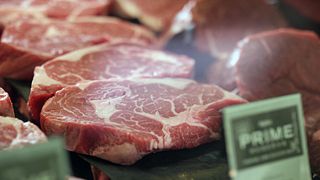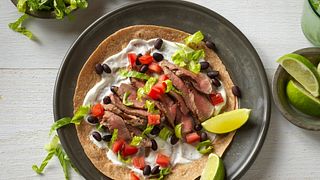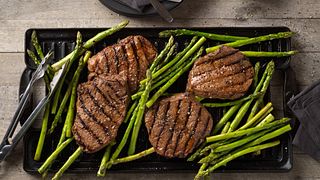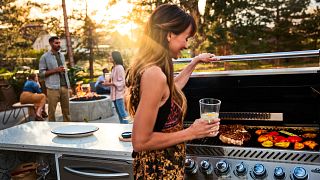It’s Prime Time to Market Prime Beef
August 21, 2019
There’s more higher-quality beef in the marketplace, thanks to advances beef farmers and ranchers have made in technology, genetics, and nutrition. Today more than 80 percent of beef graded and available in the marketplace is USDA Prime and Choice, the two highest quality grades.1 Prime beef now makes up 8.6% of graded beef, up from 4.4% just five years ago! With Choice beef available in most grocers’ meat cases, some retailers are offering their shoppers Prime beef to differentiate themselves in the competitive marketplace. Attracting beef shoppers can increase sales across the entire store, as the average shopping basket with beef is more than twice the value of the typical cart: $85.70 vs. $41.33, respectively.2
Prime beef commands a price premium thanks to its superior flavor, tenderness and juiciness, but what’s the best way to convey these attributes to shoppers to motivate them to pay more for an elevated experience? The Beef Checkoff recently surveyed more than 1,600 shoppers to determine the best messaging for selling Prime beef in retail.
Before getting into USDA quality grades, respondents were first asked to associate words with the concept of beef quality in general. The top defining attribute was “taste,” followed by “USDA grade,” “tenderness” and “juiciness.” Therefore, incorporating these terms into your Prime beef messaging will do more to highlight its quality to consumers.
When it comes to understanding USDA quality grades, shoppers are a bit overconfident: while 72% of those surveyed stated they were aware of the USDA quality grades, only 22% were able to name Prime and even fewer were able to name Choice.3 Consumers also struggle to understand the ranking of USDA quality grades, with 62% of those surveyed correctly ranking Prime as the highest quality and 41% correctly identifying Choice as middle quality. Another interesting dynamic is USDA grade and awareness is even lower among younger consumers. This indicates some shopper education is essential in differentiating your meat department’s beef offerings, but it’s important to note that you can go too far.
A messaging exercise conducted as part of the survey revealed that providing too much detail and complexity when describing Prime beef was perceived as confusing and did not have a strong positive impact on shoppers. For example, when the word “marbling” was used, some understood the meaning and had a positive response, while others struggled to understand what was meant by the terminology and as a result, it did not resonate as well. Similarly, describing Prime beef as coming from “young cattle,” led to a negative reaction amongst some shoppers. More successful messaging highlighted the attributes shoppers associate with quality (taste, tenderness and juiciness). Those terms led consumers to believe Prime was the highest quality and encouraged Prime beef purchases.
If you’re carrying Prime beef in your stores, it’s prime time to message the taste, tenderness and juiciness benefits of the product to encourage your shoppers to pay more.
- https://www.ams.usda.gov/sites/default/files/media/LSmn05gradingsummary.pdf and https://www.ams.usda.gov/sites/default/files/media/LSMNCY14gradingsummary.pdf
- IRI Panel Data, All Outlets, 52 weeks ending 1/6/19, Market Basket Study, February 2019.
- Prime Messaging Survey 2019






